A phrase which many Blue Badge Tourist Guides use, particularly when taking people outside London, is ‘England’s green and pleasant land.’ It comes from William Blake’s famous poem Jerusalem which is often sung as a hymn on patriotic occasions, most recently at the Last Night of the Proms, the series of classical music concerts held every summer at the Royal Albert Hall. Blake’s poem was set to music by Hubert Parry during the First World War and is also sung by the Women’s Institute when they gather for their meetings. Parry was a keen supporter of votes for women and allowed it to be used as an anthem by their movement.
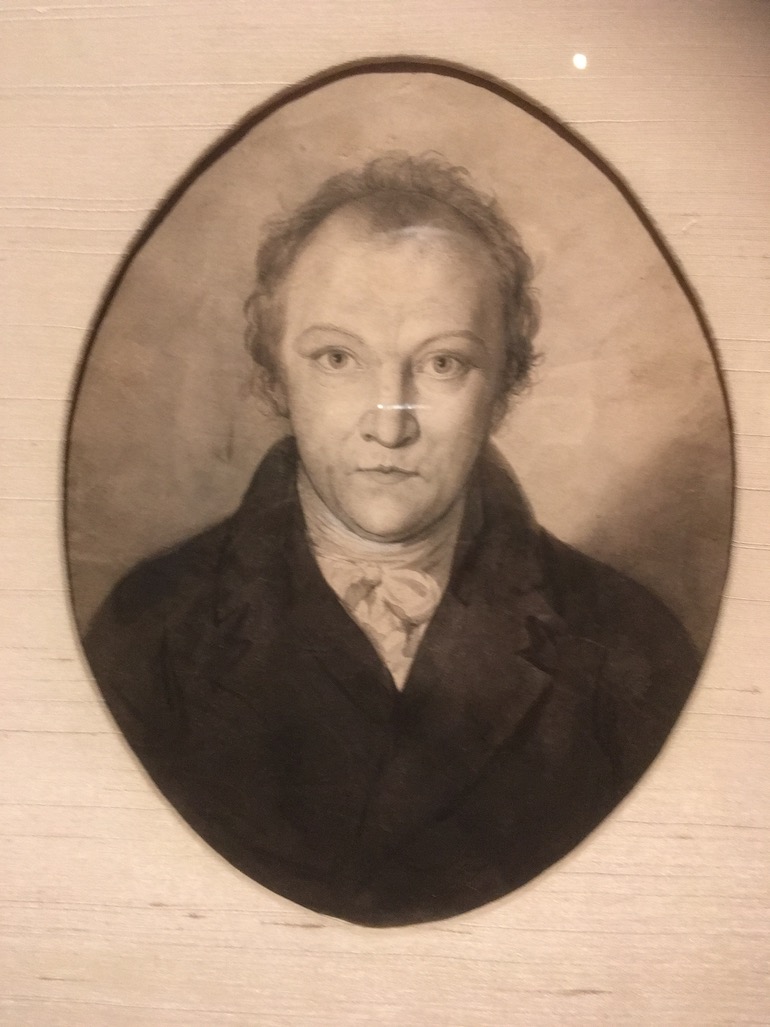
William Blake Self portrait. Photo Credit: © Tate Britain.
Although he celebrated England’s green and pleasant land, in reality, William Blake was more at home near the ‘dark satanic mills’ also referred to in this poem. He was born and spent almost his entire life in London, only leaving the city for a few years to live in Felpham, near Bognor Regis in Sussex after his patron William Hayley provided Blake and his wife Catherine with a cottage there. This is now being converted into a William Blake Centre.
A new exhibition of Blake’s paintings and engravings has opened at the Tate Britain gallery in Pimlico and will continue until 3rd February next year. It is the largest exhibition of his works for twenty years and shows that Blake was primarily an artist and engraver and his poetry was almost always accompanied by engravings which he meticulously made himself.
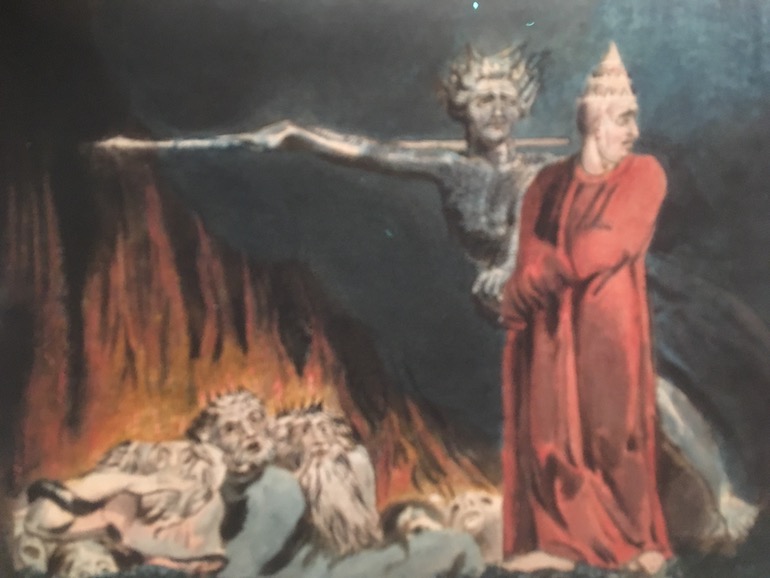
Lucifer and the Pope in Hell painting by William Blake. Photo Credit: © Public Domain.
Blake’s illustrations of the works of poets he admired like Shakespeare, Chaucer and Milton can be seen in the exhibition as can his biblical engravings. He had little time for organised religion – one of the pictures on display shows the Pope being condemned to Hell – but he had a powerful spiritual imagination and was particularly inspired by the story of Job.
William Blake, who never enjoyed financial security during his lifetime, must have identified with the figure of Job and the trials he had to endure. His one attempt to put on an exhibition of his work in a room above the family shop in Broad Street, Soho was an unmitigated disaster. Few people came and the only man to review the show condemned Blake as a madman. This exhibition has now been recreated at the Tate Britian show which is attracting large crowds.
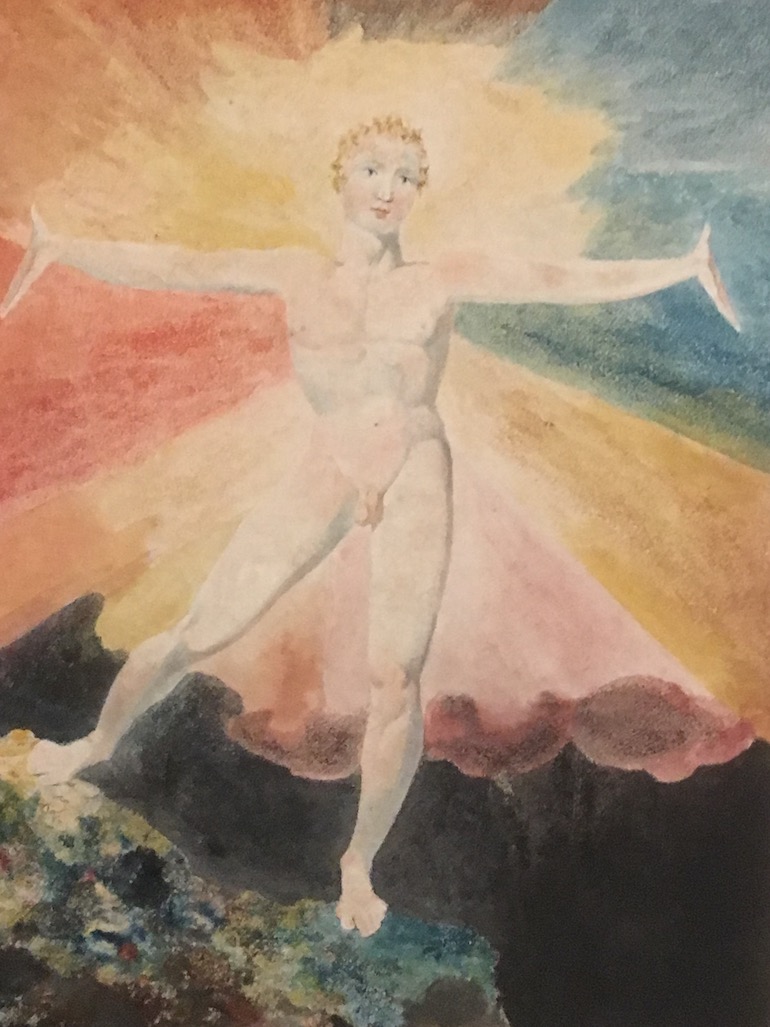
Albion Rose from A Large Book of Designs by William Blake. Photo Credit: © Public Domain.
It was to be William Blake’s fate for much of his life to be either ignored or despised. He was from a working-class, artisan background and did not paint portraits of fashionable and wealthy clients. Although he accepted the patronage of men like Hayley, he was a prickly and often resentful recipient of their largesse, constantly finding that the need to earn a living worked against his artistic inclinations. Towards the end of his life, he found a circle of young artists who admired and supported him. At this time he was living in the Strand occupying a house that had a view of the River Thames and it was here that he died in 1827 aged sixty-nine.
William and Catherine Blake were buried in the non-conformist cemetery of Bunhill Fields near St Paul’s Cathedral. In 2018 the exact site of their burial was identified by a Portuguese couple Carol and Luís Garrido who devoted many years of research to the process and a memorial was erected there by the Blake Society. Although Blake could not be buried in Westminster Abbey a bust of him by Jacob Epstein was unveiled at Poet’s Corner in 1957.
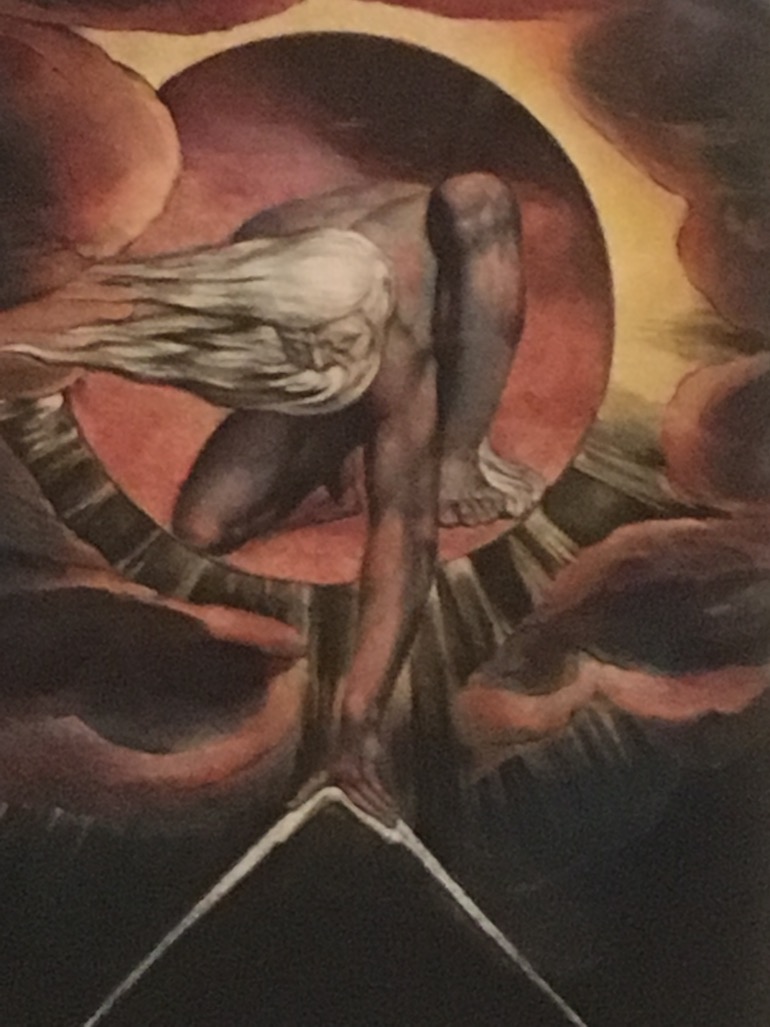
Urizen in The Ancient of Days painting by William Blake. Photo Credit: © Public Domain.
Nowadays William Blake is regarded as one of Britain’s greatest artists, having produced instantly recognisable illustrations of Isaac Newton and his imaginative rendering of Ghost of a Flea, both of which can be seen in the exhibition. He is also the only artist to have a housing estate named after him. It is in Lambeth where he lived between for ten years between 1790 and 1800 in a house long-since demolished. Although the houses in which he and Catherine lived has vanished, his paintings, poems, and reputation should never fade from our memory.
For details on William Blake’s Cottage, visit the website for The Blake Society and for the William Blake Exhibition, check out Tate Britain.

William Blake Estate in London. Photo Credit: © Edwin Lerner.




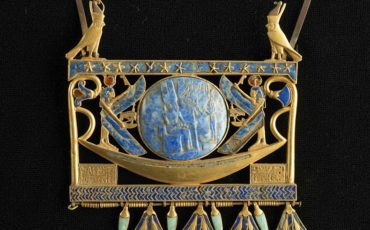

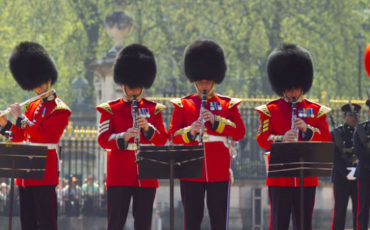
Leave a Reply